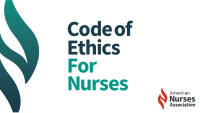Vaccination coverage is key to managing outbreaks.
As of June 17, the Centers for Disease Control and Prevention (CDC) estimated at least 7.8 million cases of the flu during the 2021–2022 season, with some 80,000 hospitalizations and almost 5,000 deaths. Late-season flu activity not normally seen in the warmer months contributed to this number. According to CDC, fewer people got vaccinated this flu season compared to last. In addition, looser restrictions on mask wearing, social distancing, and group gatherings may have contributed to increases from 2020 to 2021.
Flu and COVID-19
Vaccines for COVID-19 and the flu can be given at the same time. However, if someone has suspected or confirmed COVID-19, CDC recommends deferring flu vaccinations until a patient is released from quarantine and isolation as defined by the latest CDC guidance. Flurona—the term used when a person is infected simultaneously with flu and COVID-19—exists. Patients should be tested to confirm when clinicians suspect both viruses.
Upcoming 2022–2023 season
Last flu season, CDC recommended using any licensed, age-appropriate flu vaccine, including injectable (flu shots) and live attenuated influenza vaccines (nasal spray). For the 2022–2023 season, which starts October 1, a new preferential recommendation for higher-dose flu vaccines for adults 65 years and older awaits approval. The most important point is to get vaccinated.
For patients diagnosed with flu, healthcare providers may prescribe an antiviral medication, which should be taken as directed for maximal efficacy. Antivirals work best when started within 2 days of getting sick, underscoring the importance of patients seeking care early when flu symptoms begin. As a reminder, many flu and COVID-19 symptoms—including fever, cough, sore throat, runny nose, body aches, chills, and fatigue—overlap.
What nurses can do
When managing their own health and when providing patient care, nurses’ actions matter. Best practices for healthcare providers include the following:
- Get an annual flu shot. Current recommendations for adults suggest ideal timing for vaccination occurs in September and October.
- Strongly encourage patients to get the shot. Offer it at all patient encounters.
- Dispel myths. When a patient has vaccine hesitancy, take the time to answer their questions and dispel myths. Be respectful when they express a difference of opinion, and know you can try again next time as long as trust has been established between you and the patient. Also understand that some people can’t and won’t change their minds about being vaccinated.
- Stay up to date. Regularly check CDC and Advisory Committee on Immunization Practices (ACIP) recommendations. Use the Immunization Information System, a database that consolidates all immunization doses administered by participating providers, as a resource.
Immunization remains the most effective way to prevent flu. CDC and ACIP recommend the vaccine for everyone 6 months or older with very few exceptions. Individuals included within these exceptions (such as those who have egg or vaccine-ingredient allergies or who have had a severe allergic reaction to flu vaccine) should consult with their healthcare provider, as should those who’ve had Guillain-Barre Syndrome or who don’t feel well at the time of vaccination.
We can bring down flu levels for the 2022–2023 season. It begins with immunization!
Chad Rittle is an associate professor at Chatham University in Pittsburgh, Pennsylvania, and a Pennsylvania State Nurses Association member. Holly Carpenter is a senior policy advisor for the American Nurses Association.


















